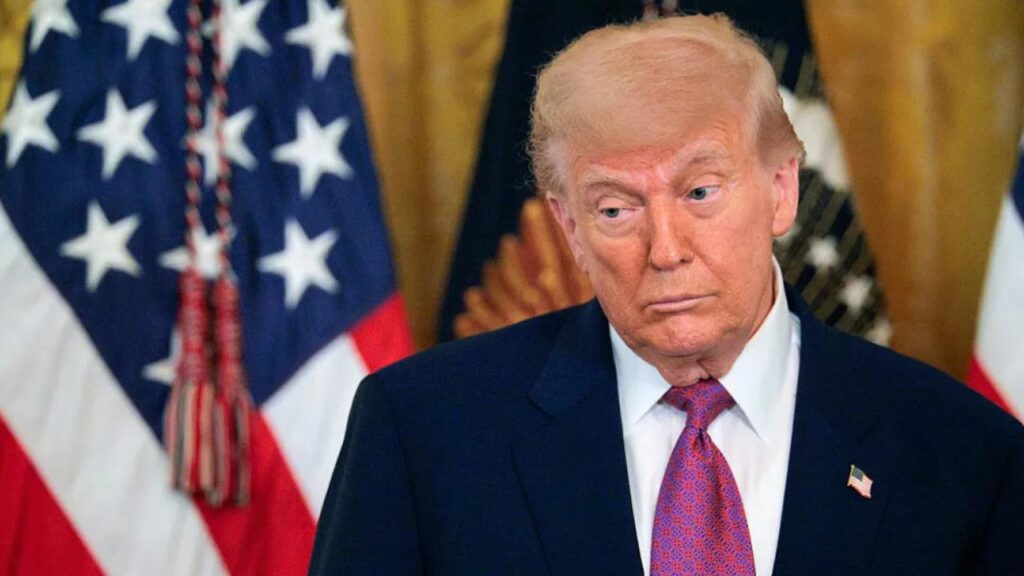Donald Trump is scheduled to host a massive military parade in Washington, D.C., featuring tanks, helicopters, historical reenactments, and thousands of troops to mark both the U.S. Army’s 250th anniversary and his 79th birthday. At the same time, more than 1,500 “No Kings” protests are planned nationwide as a counter-demonstration to what activists call a “dictator-style” show of power. Here’s an insider look at what Trump thinks about the “No Kings” chants and why he may actually welcome them.

What Trump Says—and What He Really Means
When reporters asked if he felt like a king, Trump paused and replied with a grin, “I don’t feel like a king.” But beyond appearing presidential, he made it clear that he views the dissent not as organic citizen demonstrations, but as weak and un-American. He went further at Fort Bragg, calling protesters “paid troublemakers” and warning they’d be met with “very big force” if they disrupted the D.C. parade.
In his mind, Trump says this display honors veterans and service members—not himself. He points out that he was inspired by Bastille Day in France when he first came up with the idea back in 2017. But critics argue it’s more about personal aggrandizement, pointing out how the same parade swelled from originally being a modest tribute to the Army into a state-level spectacle now tied to his birthday and political brand.
Trump Fires Back at ‘No Kings’ Chants During Military Parade
Trump’s response to “No Kings” is a performance in itself—a calculated mix of denial, invigoration, and defiance. By clapping back with “I don’t feel like a king,” while mobilizing military-style force, he tries to shape the narrative, painting critics as un-American or dangerous. But the sheer scale of nationwide protests suggests that many Americans are already rejecting that storyline.
Whether the day’s outcome is patriotic celebration or political flashpoint, one fact seems clear: June 14 won’t be just another parade. It’s a point of collision between two visions of America—one rooted in citizen voice, another in elite military display.
The “No Kings” Movement: Grassroots Pushback
Organized under the 50501 (50 states, 50 protests, one movement) banner, the “No Kings” protests are being organized to reject authoritarian imagery and military-political entanglement. Rally organizers say their goal is to insist that “in America, we don’t do kings”—and to oppose what they view as federal overreach, from forced immigration actions to “paid” showy military force.
Some organizers proudly wear clown outfits and wave American flags—a playful yet pointed performative contradiction to Trump’s militarized pageantry. They’ve committed to nonviolence and safety training; the movement stresses cherry-pickers will not roll tanks, but regular citizens voicing peaceful dissent.

Visual Snapshot: Trump vs. Protest
In the video above, Trump downplays the protests with sarcasm. But beneath the jest is a hardened strategy: a show of force. He even threatened up to $134 million worth of hardware and personnel being put on standby for possible disorder during his parade. Amnesty International and other watchdogs have condemned the rhetoric, warning it could chill Americans’ right to free speech.
Why This Matters Now
| Insight | Why It Counts |
|---|---|
| Mass mobilization: Over 1,800 No Kings events are happening—one of the largest anti-Trump nationwide actions since April. | Showcases deep public resistance and capacity for decentralized protest. |
| Money talk: Parade cost ballooned from $25M to $45M—many argue that’s taxpayer money better spent elsewhere. | Raises questions about fiscal stewardship during budget cuts. |
| Military in politics: Federal troops in L.A., Marines on parade—critics say it’s a dangerous departure from democratic norms. | Echoes concerns about executive overreach and blurred civil-military boundaries. |
Personal Note from a Reporter
As someone who’s covered political pageantry from D.C. to Paris, I’ve seen how military parades can stir national pride—but also unease when tied to one leader or birthday. Trust me, context matters. When a leader frames dissent as disloyalty while echoing authoritarian aesthetics, eyebrows shoot up.
FAQs
Why is it called “No Kings”?
It’s about preventing quasi-monarchical rule. Protesters argue the parade echoes autocratic imagery and is a misuse of military pageantry.
Where are these protests happening?
In 1,500+ locations—from major metros like Chicago and LA to small towns across all 50 states.
Is Trump going to use force?
He warned of “very big force” for protesters in D.C.—though it’s unclear what that means operationally. Human rights groups warn this may violate free-speech protections.
How much will the parade cost?
Estimates range from $25 million to $45 million, possibly up to $134 million including prep and enforcement costs.






